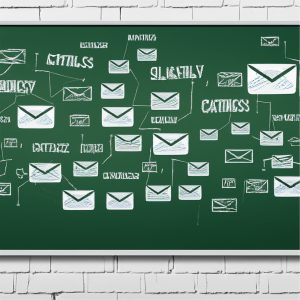Ranked From Mildly Annoying to 100 Percent Self-Defeating, According to a New Survey
In fact, a recent survey says 73 percent of workers still count email among their preferred ways to communicate at work, more than any other method.
That’s why it’s worth paying attention to your email habits. Pick up some bad ones over time, and you’ll see that they make your emails less persuasive, less effective, and more annoying to your colleagues.
A company called Perkbox Insights has done a lot of the work for you, surveying 1,928 employed adults to find out what they love, and what they loathe, about the emails they get every day.
We’ll go through the list below, starting with the email tics that workers say they find mildly annoying, on and through the worst habits that make them want to report your message as spam.
1. Mild pleasantries
I’m surprised to see these on the list, but here we are: annoying but mildly so. Between 6 and 12 percent of respondents said they found these kinds of opening and closing lines grating.
- “Hope you’re well” (6%)
- “Thanks in advance” (7%)
- “Please advise” (8%)
- “All the best” or “Best” (9% and 12%)
- “Sincerely” (12%)
Seriously: “Sincerely” made the list!
Also: “Thanks in advance” Although 7 percent of people say they don’t like it, it actually comes up as the most-effective way to end an email if you want to guarantee a response in another study.
2. Impatient repetition
These make sense. Phrases suggesting the email sender has already made his or her point separately but is just getting impatient waiting for your reply or action were deemed annoying by between 15 and 33 percent of respondents.
- “Per our conversation” (15%)
- “Confirming receipt” (16%)
- “Just checking in” (19%)
- “Any updates on this?” (24%)
- “As per my last email” (33%)
The biggest surprise here is that apparently 67 percent of people don’t hate that last one: “As per my last email…”
3. Too darn cheery
- What’s the story here? I guess it’s that it’s hard to thread the needle between being friendly and being professional.
- Using colored fonts or smiley faces (21% and 22%)
- Writing things like “Happy Monday!” or “Happy Thursday!” (23%)
- Using emojis (29%)”Warmly” (31%)
4. Lack of targeting
- Nobody likes a generic email, or to think they’re simply being sent a message like they’re in the top of a sales funnel.
- “Greetings” or “Hey” (22% and 28%)
- “To whom it may concern” (37%)
- “Just looping in…” (37%)
- No sign off or no greeting (44% and 53%)
- CC’ing people who don’t need to be involved (63%)
5. Laziness
Was it Mark Twain who said I would have written a shorter letter but I didn’t have enough time? (Actually, no: Blaise Pascal.)
- But, emails that were too long, or clearly hadn’t been sufficiently proofread were among the near-top pet peeves of workers who were surveyed.
- Not having an email signature (23%)
- Sending very long emails (29%)
- Sending an email without proofreading (50%)
6. Inappropriate emotion
Once again, it’s about being professional. You don’t mind getting an email with affection or emotion from a close friend, family or significant other, but at work? Forget about it.
- Using too many exclamation points (52%)
- Using slang, like “OMG” (53%)
- “Love” (57%)Using “X,” as in kisses (65%)
7. ALL CAPS
This one gets its own separate entry:Using capital letters for whole words or sentences (67%)
Two-thirds of people agree: PLEASE DON’T DO IT.
connect us:




